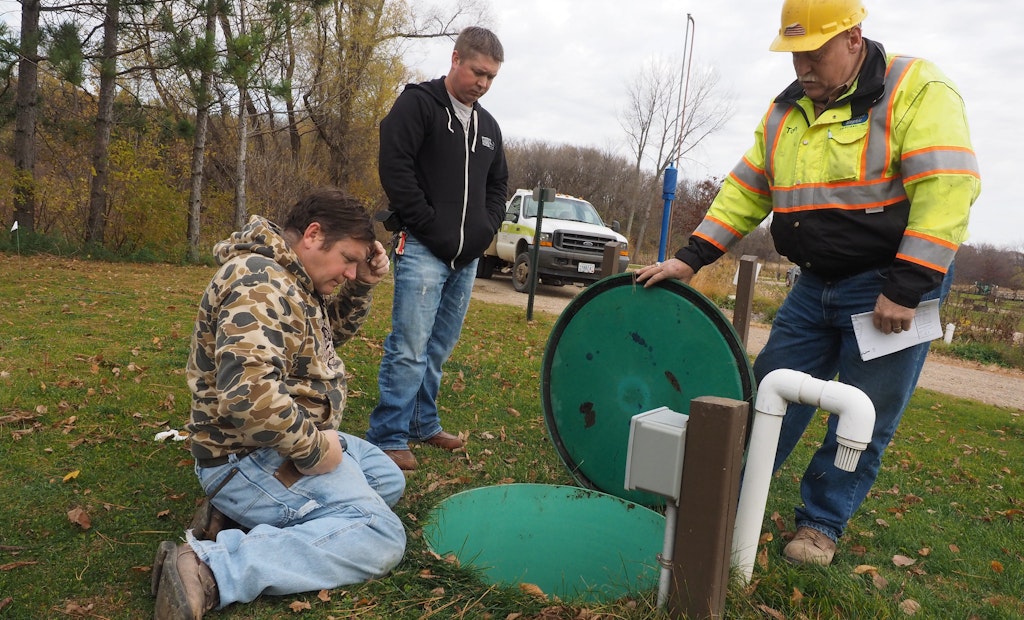Interested in Septic Tanks?
Get Septic Tanks articles, news and videos right in your inbox! Sign up now.
Septic Tanks + Get AlertsIn this recent series on troubleshooting septic systems, the focus was inside the house: looking at water-use habits of the residents, evaluating water-using devices in the house, and making sure there was not extraneous water coming in from around the house foundation. Now it is time to look at issues outside the house starting with the house sewer pipe and septic tank.
The house sewer line to the septic tank should be laid on a minimum slope of 1 inch per 8 feet of length. The pipe should be properly bedded with a coarse sand or gravel media. This helps ensure that the pipe stays on grade without any bends or dips in the pipe. Between water-use events in the house, there should be only air left in the pipe between the house and tank. If there is a backup into the house, the pipe should be checked for a blockage either by running a plumber’s snake down the pipe through the clean-out or using a camera to inspect for any dips where solids can accumulate or, in cold climates, accumulate water and solids that can freeze the pipe shut.
As discussed previously, any extra water delivered to the system can cause the system to hydraulically fail, resulting in sewage backups into the house or surfacing in the yard around the drainfield. In areas where basements are common, often with footing drains to keep the basement dry, there are a couple of other situations to be aware of. Check to make sure there is not a direct connection of the foundation drain to the house sewer pipe. Another way the footing drains can impact the septic tank and system is if the footing drain (which is also bedded in coarse material) intersects with the sewer pipe trench. This can happen with houses that are installed on slopes and where there is a walkout from the lower level or basement.
The coarse material of the sewer trench provides a convenient drain for the water around the foundation. Water flows in the trench alongside the sewer pipe to the vicinity of the tank, saturating the soil and providing the opportunity for the water to infiltrate the tank and be delivered to the drainfield.
Even if the septic tank connections and lids are watertight, depending on the location water delivered near the tank can still negatively impact the drainfield area by flooding — resulting in hydraulic failure. Check where the pipe exits the house and evaluate the elevation of the trench versus the elevation of the foundation drain to make sure there is not a direct connection. Also determine whether the elevation of the top of the tank is below the elevation of the basement floor. If it is, water is likely flowing from around the foundation over the tank, and if inspection ports, manhole extensions, lid joints, and pipe connections are not watertight, infiltration of water into the tank is likely a problem during wet seasons.
About the author: Jim Anderson is connected with the University of Minnesota onsite wastewater treatment program and is an emeritus professor in the university’s Department of Soil, Water and Climate. Send him questions about septic system maintenance and operation by sending an email to kim.peterson@colepublishing.com.
This article is part of a series on troubleshooting septic tanks:
- Tips for Troubleshooting Problem Systems
- Troubleshooting Septic Tanks
- Tank Troubleshooting: Checking Inlet and Outlet Baffles
- Troubleshooting: Additional Items to Check in Troublesome Septic Tanks






